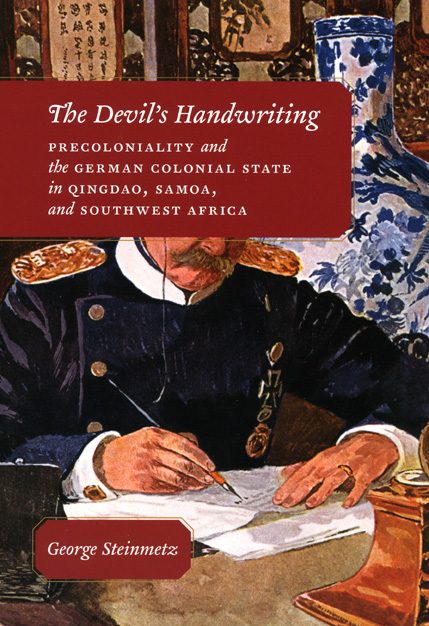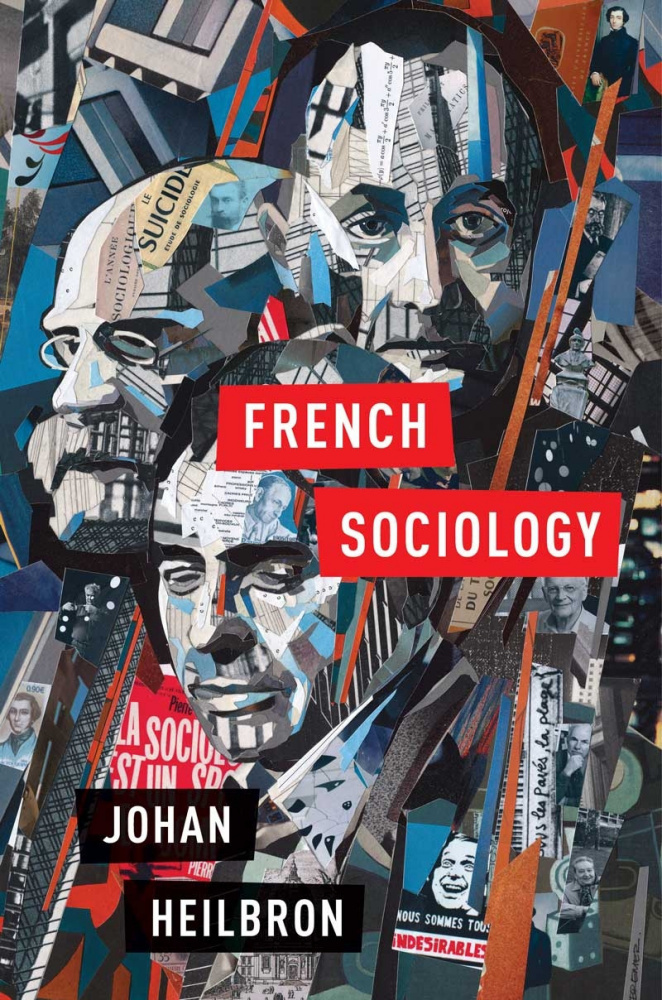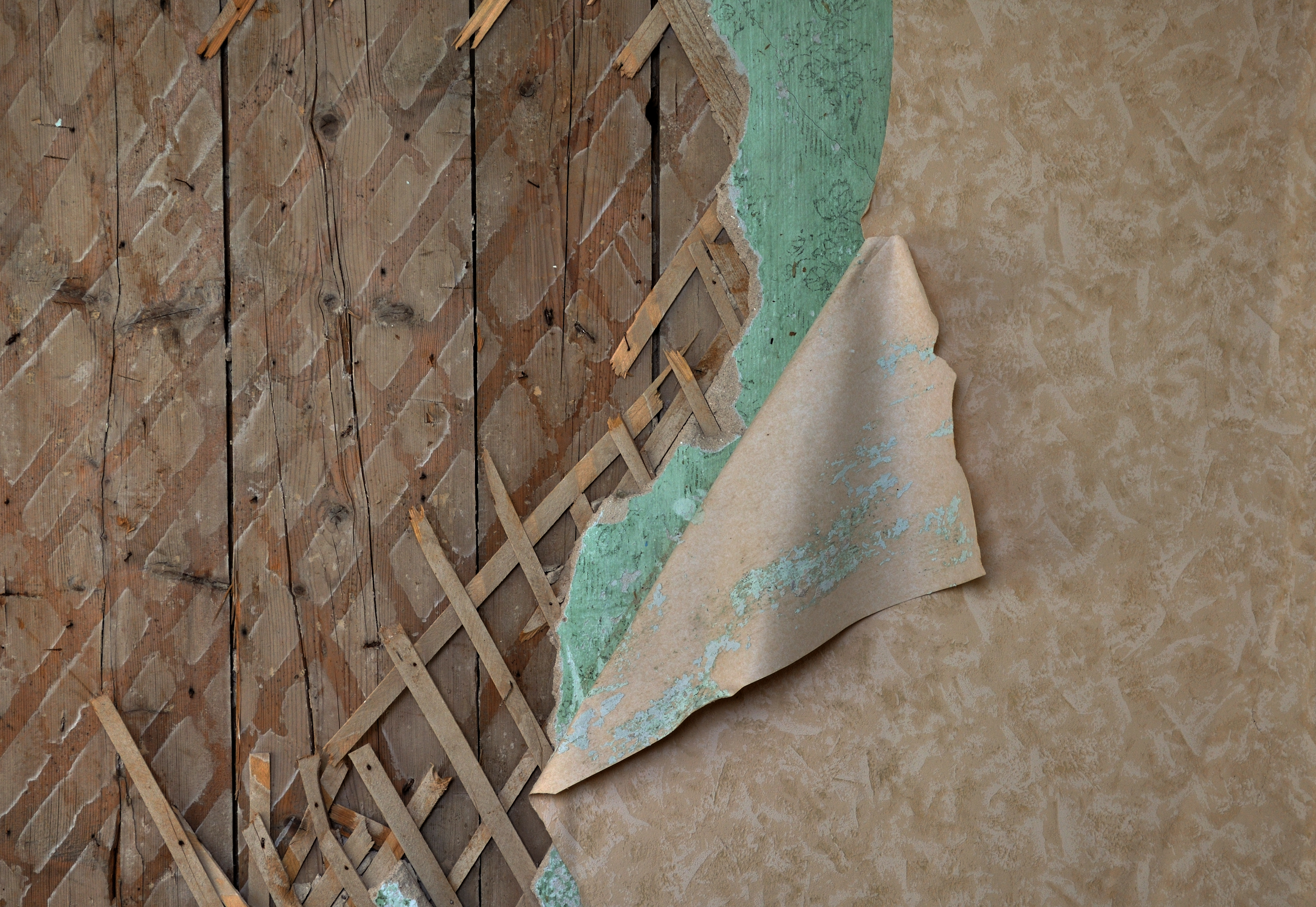This article sketches a theory of interdisciplinarity based on Pierre Bourdieu’s field theory and grounded historically in research on sociologists’ relations with historians and other disciplines.
My approach to interdisciplinarity differs from existing accounts in three ways. First, some approaches start from one discipline and move outward. I find that it is preferable to begin by reconstructing disciplinary fields within the metafield that groups academic disciplines and to then examine the full range of interactions among the disciplines.
“I analyze disciplines as social fields—i.e., as dynamic, relational, internally heterogeneous assemblages.”Second, rather than viewing disciplines as unified totalities or homogeneous “waves.”1For the “waves” metaphor, see the introduction to Julia Adams, Elisabeth S. Clemens, and Ann Shola Orloff, eds., Remaking Modernity: Politics, History, and Sociology (Durham: Duke University Press, 2005) I analyze disciplines as social fields—i.e., as dynamic, relational, internally heterogeneous assemblages. Rather than asking how entire disciplines interact with one another, I focus on the ways specific actors or groups within a given discipline relate to specific actors and ideas in other disciplines. I ask how different kinds of interdisciplinary practices are supported or hindered by forces located inside disciplines and at varying distances from them. I trace the ways interdisciplinary engagements are driven by a varying mixture of scientific problems, field-specific interests and battles, and pressures and inducements from the outside.
Interdisciplinarity, I argue, is motivated by three main sorts of interest:2 “Interests” are defined here as goals pursued within a specific field for symbolic or material gain or for their own sake. battles within a discipline, conformity with authorities, and scientific questions that push scholars to look beyond their home field. Scholars located in different sectors of a given field have different interests related to (inter)disciplinarity.
Third, my account rejects any assumption that interdisciplinarity is an inherent good. Instead I ask which forms of interdisciplinarity have been conducive to social scientific innovation, and vice versa. The more generative interdisciplinary configurations have involved interactions between actors and positions with relatively equal power or weight in their respective fields. Such interactions tend to be motivated by intellectual problems and field-specific conflicts rather than external compulsion or incitement. The most productive interdisciplinary conjunctures result from serendipitous resonances and contingent encounters leading to processes in which disciplines interpenetrate dialectically over time.3 On the meaning of the dialectical method in the sociology of knowledge see Karl Mannheim, “Historicism,” in Paul Kecskemeti (ed.), Karl Mannheim, Essays on the Sociology of Knowledge (London: Routledge and Kegan Paul, 1952), pp. 84–133. Things are usually not as generative where interdisciplinarity is externally induced, one-sided, or organized around a division of labor rather than a fusion of perspectives. One precondition for these more fruitful versions of interdisciplinarity is, perhaps paradoxically, disciplinary autonomy, or more precisely, semi-autonomous fields of knowledge production. Interdisciplinarity requires disciplines, or some field-like analogue of disciplines.
“Which forms of interdisciplinarity are best suited to nurturing creativity and innovation?”Several questions guide this research. First, what are the main forms of interdisciplinarity? Which forms of interdisciplinarity are best suited to nurturing creativity and innovation? I explore different patterns of disciplinary contact, avoidance, and exchange, and identify two main forms of interaction. Some are more symmetrical, with equal participation by the interacting disciplines; others are asymmetrical. Some are more processual and dialogic; others are oriented toward discrete outputs. These two dimensions are linked. Symmetry is necessary for more dialogic encounters.
What are the underlying sources of symmetrical interactions? What accounts for changes in levels of interdisciplinary desire? Why are different sectors of a discipline associated with different interdisciplinary styles, strategies, and targets?
Field theory and the study of disciplines and interdisciplinarity
Bourdieu’s theory sensitizes us to the creation and breakdown of disciplinary boundaries and the patterns of repulsion and interaction across disciplines. A scientific field, for Bourdieu, is a social microcosm that is “endowed with its own laws of functioning” and “partially autonomous from the necessities of the larger social macrocosm that encompasses it.”4Pierre Bourdieu, “On the Possibility of a Field of World Sociology,” in Social Theory for a Changing Society, ed. Pierre Bourdieu and James S. Coleman (Boulder: Westview Press, 1991), 373–387, 375. Fields are governed by competition for a specific symbolic currency over an extended period of time. Fields may also undergo “specific revolutions” that redefine the resources around which conflict is organized. And they may disappear or be engulfed by other fields.
Most fields are defined by two principal axes. One indexes the particular resource around which competition is organized; the other runs from autonomy to heteronomy. The autonomy axis is crucial when considering scientific disciplines, since differences in independence from the outside world are linked to differing postures toward interdisciplinarity. Although a field’s boundaries are partially permeable, field autonomy depends on border controls, and these are crucial for questions of interdisciplinarity. Scientific heteronomy is a situation in which scientific practices are oriented mainly toward actors and ideas located outside the home field. When members of a discipline cannot resist the pull of an adjacent discipline or the field of power, interdisciplinarity tends to take an impoverished, one-sided form. Indeed, the style of interdisciplinary rapprochement varies depending on position in the home discipline. Heteronomous positions tend to be pulled into the ambit of external agendas; autonomous positions seek contacts relevant to their scientific interests or useful in struggles within the home field. A third space between the disciplines may be constituted, and in rare cases it can become autonomous, constituting itself as a new disciplinary field.5“Interdisciplines” are not generated automatically, as is sometimes suggested, but result from overdetermined conjunctions of disparate determinants.
Compare Scott Frickel and Ali O. Ilhan, “Disciplinary and Interdisciplinary Change in the Social Sciences: A Longitudinal Comparison,” in Scott Frickel, Mathieu Albert, and Barbara Prainsacj, eds., Investigating Interdisciplinary Collaboration: Theory and Practice across Disciplines (Rutgers University Press, 2016). Indeed, sociology itself emerged from spaces between preexisting disciplines.
Subfields are crucial to this discussion. All of a scientific subfield’s participants also participate in the environing discipline, passing through the same gate-keeping and credentialing controls. At the same time a subfield may also be distinct enough from the encompassing field to generate its own habitus, scientific libido, forms of symbolic capital, and struggles over subfield-specific stakes. A subfield may revise or even invert the values guiding activity in the surrounding field. Interdisciplinary forays are often initiated from within subfields. Within the subfield of political theory in American political science, for example, dominant disciplinary assumptions about “value-freedom,” normativity, regularity determinism, and the hierarchy of empirical and theoretical work are reversed.6S. Mihic, S. G. Engelmann, and E. R. Wingrove, “Facts, Values, and ‘Real’ Numbers,” in The Politics of Method in the Human Sciences: Positivism and its Epistemological Others, ed. George Steinmetz (Durham, NC: Duke University Press, 2005), 470–495.
Disciplinary fields are also grouped into multidisciplinary scientific metafields. The assignment of disciplines to different metafields varies historically and cross-nationally, and this promotes certain lines of interdisciplinarity while discouraging others. The historicism of German social science before 1933 was encouraged by the shared location of sociologists, economists, and ethnologists in the universities’ “Geisteswissenschaften” (human sciences) divisions, for example. Durkheimian sociology’s aversion to the topic of the state and politics resulted partly from the fact that sociology clustered around in the Letters division of the French university, while political science was only taught at the time in a the private the École Libre des sciences politiques (Sciences Po), whose main mission was not scientific but political—training the national power elite.7Dominique Dammame, “Genese sociale d’une institution scolaire, l’École libre des sciences politiques,” Actes de la recherche en sciences sociales 70 (1987), 31–46.
In order to understand patterns of disciplinary separation and interaction we also need to consider larger institutions such as universities, foundations, think tanks, states, and government agencies, and society-wide events and processes. Such institutions can shape the hierarchy and ontological division of labor among disciplines. Institutions may create entirely new disciplines and forms of interdisciplinarity.
“Social scientific fields continue to have strong national accents almost everywhere, due to peculiar educational, scientific, and intellectual systems and traditions.”A final set of considerations concerns the spatial unit of analysis. Fields exist at scales larger or smaller than the nation-state.8 Chicago: University of Chicago Press, 2007More info → Yet social scientific fields continue to have strong national accents almost everywhere, due to peculiar educational, scientific, and intellectual systems and traditions.9Heilbron, Johan, “Qu’est-ce qu’une tradition nationale en sciences sociales?,” Revue d’histoire des sciences humaines 18 (2008), 3–16. Disciplines vary in their orientation toward international scholarship in their domain.10 Johan Heilbron and Anaïs Bokobza, “Transgresser les frontières en sciences humaines et sociales en France,” Actes de la recherche en sciences sociales no. 210 (2015), 108–121. International orientations are used to fight domestic battles. Academics move through international space, due to exile, crisis, and scientific interests, and this causes both devaluation and inflation of their scientific capital.11George Steinmetz, “Ideas in Exile: Refugees from Nazi Germany and the Failure to Transplant Historical Sociology into the United States,” International Journal of Politics, Culture, and Society 23(1): 1–27. International interdisciplinarity is therefore even more complex than national versions.
Chicago: University of Chicago Press, 2007More info → Yet social scientific fields continue to have strong national accents almost everywhere, due to peculiar educational, scientific, and intellectual systems and traditions.9Heilbron, Johan, “Qu’est-ce qu’une tradition nationale en sciences sociales?,” Revue d’histoire des sciences humaines 18 (2008), 3–16. Disciplines vary in their orientation toward international scholarship in their domain.10 Johan Heilbron and Anaïs Bokobza, “Transgresser les frontières en sciences humaines et sociales en France,” Actes de la recherche en sciences sociales no. 210 (2015), 108–121. International orientations are used to fight domestic battles. Academics move through international space, due to exile, crisis, and scientific interests, and this causes both devaluation and inflation of their scientific capital.11George Steinmetz, “Ideas in Exile: Refugees from Nazi Germany and the Failure to Transplant Historical Sociology into the United States,” International Journal of Politics, Culture, and Society 23(1): 1–27. International interdisciplinarity is therefore even more complex than national versions.
The example of interactions between history and sociology
This theory of interdisciplinarity suggests a different approach to a well-worn theme: the relations between history and sociology. Rather than asking about the rise of historical sociology or social history, I examine the full range of interactions between two disciplines. This pairing is well suited for such an analysis, since the relative power of history and sociology has varied greatly across time and space rather than tipping consistently in the same direction.
What I find is that the most widely touted episodes of interdisciplinarity have been one-sided. American historical sociology has operated without much contact with actual historians, while West German social history (historische Sozialgeschichte) had little contact with West German sociologists. Historicist sociologists in the Weimar Republic opened up to interpenetration by history and historicism, but without much reciprocal interest from historians. During the Nazi era, Volksgeschichte, or ethnic history, entered into ongoing relations with some right-wing sociologists. This intensive collaboration between historians and sociologists, concentrated at the universities of Leipzig and Königsberg, continued after the war through the 1960s in venues like the Arbeitskreis für moderne Sozialgeschichte (Working Group for Modern Social History).12 Werner Conze, “Die Gründung des Arbeitskreises für moderne Sozialgeschichte,” Hamburger Jahrbuch für Wirtschafts- und Gesellschaftspolitik 24 (1979), 23–32; Ulrich Engelhardt, Konzepte der “Sozialgeschichte” im Arbeitskreis für moderne Sozialgeschichte (Essen: Klartext, 2007); Carsten Klingemann, Soziologie und Politik:Sozialwissenschaftliches Expertenwissen im Dritten Reich und in der frühen westdeutschen Nachkriegszeit (Wiesbaden: VS Verlag für Sozialwissenschaften, 2009); Jan Eike Dunkhase, Werner Conze: ein deutscher Historiker im 20. Jahrhundert (Göttingen: Vandenhoeck & Ruprecht, 2010).
The two most promising examples of dialogic, processual interdisciplinarity are French, involving sociologists and the interwar Annales school, and a group of historians and sociologists around Pierre Bourdieu since the 1980s. Both of these rapprochements occurred during crises of professional recruitment and succession in the disciplines. During both periods the subgroups that approached one another were drawn from the autonomous, heterodox, and research-oriented sectors of their respective disciplines. Conditions for sustained interaction between the disciplines became stronger after World War I due to the reduced power of the Durkheimian camp and the fact that leading Durkheimians now articulated a more tolerant stance toward historians. A new generation of historians entered the profession at a moment of severe crisis. This solidified their structural affinities with sociologists, most of whom were also located on thin ice institutionally between the wars. The intellectual complementarities between neo-Durkheimian sociology and Annales historiography were as important as these structural homologies. Sociology promised to help Annales historians think about problems of generalization, comparison, collective consciousness, and causality. Annales historian Marc Bloch helped sociologist Maurice Halbwachs think through his conception of collective memory. Sociologist Célestin Bouglé overcame the Durkheimian resistance to analyzing unique events by working through the arguments of German neo-historicism. Raymond Aron became an advocate of “sociologie historique” between the wars.
After 1945, the Annales historians Lucien Febvre and Fernand Braudel solidified their relationship to the social sciences by associating the journal with the newly founded Sixth Section of the École Pratique des Hautes Etudes (EPHE). Operating from a position of institutional strength, Braudel was happy to advocate interdisciplinary dialogue, but this did not lead to a return to vital interactions with sociologists.13Alain Maillard, “Les temps de l’historien et du sociologue. Retour sur la dispute Braudel-Gurvitch,” Cahiers internationaux de sociologie 119 (2005), 197–222.
How can we explain the disappearance of the sociology-history axis in the 1950s and 1960s even though interdisciplinarity was being proclaimed as a universal good? One reason is the widening intellectual gap between Braudel and postwar sociology’s “intellectual pole,” the most direct descendant of the interwar Durkheimians.14On the postwar French sociology field see Johan Heilbron’s French Sociology
 Ithaca, NY: Cornell University Press, 2015More info →
History was less open than sociology to philosophy, especially existentialism. An additional wedge was driven between history and sociology when structuralism began to reinvigorate theory in the social sciences, since structuralism was resolutely synchronic and partly a social scientific riposte against the hegemonic ambitions of Annales-style social history. Contacts between historians and sociologists remained superficial throughout this period.15 Lutz Raphael, Die Erben von Bloch und Febvre: Annales-Geschichtsschreibung und nouvelle histoire in Frankreich 1945–1980 (Stuttgart: Klett, 1994). Only when French historians grew disillusioned with Braudel’s insistence on the primacy of economic, demographic, and geographical structures in the 1980s did they begin to look to other disciplines. This set the stage for some of these historians’ encounter with Bourdieu.16I discuss the relations between historians and Bourdieu and the emergence of a Bourdieusian “sociologie historique” in France in my “Bourdieu, Historicity, and Historical Sociology,” Cultural Sociology 5:1 (2011), 45–66; also “Pierre Bourdieu, l’histoire et la sociologie historique,” in Dictionnaire international Bourdieu (Paris: CNRS Éditions, forthcoming).
Ithaca, NY: Cornell University Press, 2015More info →
History was less open than sociology to philosophy, especially existentialism. An additional wedge was driven between history and sociology when structuralism began to reinvigorate theory in the social sciences, since structuralism was resolutely synchronic and partly a social scientific riposte against the hegemonic ambitions of Annales-style social history. Contacts between historians and sociologists remained superficial throughout this period.15 Lutz Raphael, Die Erben von Bloch und Febvre: Annales-Geschichtsschreibung und nouvelle histoire in Frankreich 1945–1980 (Stuttgart: Klett, 1994). Only when French historians grew disillusioned with Braudel’s insistence on the primacy of economic, demographic, and geographical structures in the 1980s did they begin to look to other disciplines. This set the stage for some of these historians’ encounter with Bourdieu.16I discuss the relations between historians and Bourdieu and the emergence of a Bourdieusian “sociologie historique” in France in my “Bourdieu, Historicity, and Historical Sociology,” Cultural Sociology 5:1 (2011), 45–66; also “Pierre Bourdieu, l’histoire et la sociologie historique,” in Dictionnaire international Bourdieu (Paris: CNRS Éditions, forthcoming).
Conclusion
It is a commonplace that scientific discoveries emerge at the frontiers between disciplines and that the rigid embrace of a single discipline can stunt scholarly imaginations. The most successful instances of interdisciplinarity resulted from overdetermined and utterly serendipitous resonances and synchronicities. It is extremely unlikely that such conditions could be deliberately induced. The kinds of “top-down” interdisciplinarity preferred by administrators, research funders, and corporations are typically associated with shallower forms of interdisciplinarity. What a historical field analysis like this one can accomplish is to point to the necessary if not sufficient conditions for generative interdisciplinarity, and to identify likely nodes of resistance and receptiveness to such exchanges.
“Disciplinary boundaries can shield science against outside pressures, help scientists exercise quality control, and generate new problems in an organic way.”This essay has shown that the most productive forms of interdisciplinarity involved forays into adjacent disciplines motivated by intellectual, scientific, and strategic interests that were generated within existing disciplines. This leads me to conclude with a muted defense of disciplines, in the interest of interdisciplinarity. Disciplinary boundaries can shield science against outside pressures, help scientists exercise quality control, and generate new problems in an organic way. While threats to scientific autonomy from states and other institutions clearly matter here, pressures also stem from other disciplines, and programs like E. O. Wilson’s “consilience.” The “fieldness” of disciplines protects interdisciplinary moves from being co-opted by from such reductionist scientific programs and bureaucratic and corporate logics. Fields allow interdisciplinary work to be subjected to evaluative assessments grounded in semi-autonomous procedures that have been elaborated over time and that protect science from external forces.
This partial defense of disciplines recognizes the arbitrariness of existing divisions among those disciplines. We may have to accept this arbitrariness in order to defend procedures of judgmental rationality and ward off scientific heteronomization. Whether these bounded fields should be called disciplines is a different matter. The connotations of the word “discipline,” since Foucault, include the idea of external control, which is what we are trying to avoid. The phase “semi-autonomous scientific fields” would probably be preferable.
References:
Compare Scott Frickel and Ali O. Ilhan, “Disciplinary and Interdisciplinary Change in the Social Sciences: A Longitudinal Comparison,” in Scott Frickel, Mathieu Albert, and Barbara Prainsacj, eds., Investigating Interdisciplinary Collaboration: Theory and Practice across Disciplines (Rutgers University Press, 2016).
 Ithaca, NY: Cornell University Press, 2015More info →
Ithaca, NY: Cornell University Press, 2015More info →












